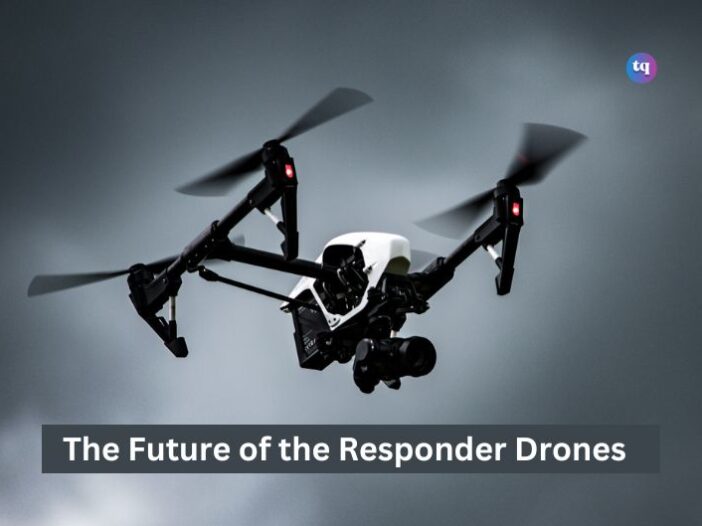
The integration of innovative technologies has always been paramount in public safety. Today, as you stand at the cusp of technological advancement, the emergence of drones as first responders marks a pivotal moment in emergency services. With their agility, versatility, and rapid response capabilities, drones are reshaping the landscape of First Responder Drone operations.
Table of Contents
The Evolution of First Response Drone
Traditionally, drone operations relied heavily on ground-based units, often facing challenges such as limited visibility, accessibility, and real-time intelligence gathering. However, drone technology has introduced a paradigm shift in addressing emergencies.
Unprecedented Versatility
One of the critical advantages of utilizing drones as first responders lies in their unparalleled versatility. Equipped with high-definition cameras, thermal imaging sensors, and even payload delivery systems, drones offer a multifaceted approach to emergencies.
Enhanced Situational Awareness
In critical scenarios such as natural disasters, search and rescue missions, or law enforcement operations, obtaining real-time situational awareness is paramount. Drones excel in providing aerial surveys, enabling responders to assess the extent of the situation swiftly and accurately.
Swift Response Times
Time is of the essence in emergencies, and drones excel in rapid deployment. With their ability to take off quickly from virtually any location, drones can swiftly reach inaccessible or hazardous areas, providing immediate assistance where traditional methods fall short.
Minimizing Risk to Responders
The safety of first responders is a top priority in any operation. By leveraging drones, responders can mitigate the risks of entering potentially hazardous environments. Drones can serve as the first line of defence, gathering crucial data and intelligence without exposing personnel to unnecessary danger.
Efficient Resource Allocation
Resource allocation is crucial in emergency management, as it optimizes response efforts. Drones offer a cost-effective solution by minimizing the need for extensive manpower and equipment. Moreover, their ability to cover large areas quickly enhances the overall efficiency of response operations. By deploying drones, agencies can allocate resources more effectively, directing personnel and equipment to the most needed areas. This targeted approach reduces redundancy and ensures a more streamlined response to emergencies.
Additionally, drones can provide continuous surveillance and monitoring, allowing responders to assess the evolving situation in real-time and adjust their strategies accordingly. Furthermore, drones can be deployed with traditional response methods, complementing ground-based operations and enhancing overall coordination. As a result, agencies can achieve greater situational awareness and response capabilities without significantly increasing costs or logistical burdens. Integrating drones into emergency management practices represents a proactive step towards improving response efficiency and saving lives.
Empowering Communities
Integrating drone technology in first response enhances emergency services’ capabilities. It empowers communities to take proactive measures to ensure their safety. By leveraging drones for tasks such as aerial reconnaissance, search and rescue missions, and disaster assessment, emergency responders can gather crucial data and intelligence swiftly and accurately, enabling more effective decision-making in high-pressure situations.
Through public education and awareness initiatives, communities can familiarize themselves with drones’ capabilities and learn how to integrate them into their emergency preparedness plans. This proactive approach enables communities to strengthen their resilience in the face of adversity, whether natural disasters, public safety incidents, or other emergencies.
Furthermore, the adoption of drone technology facilitates collaboration between emergency responders and community members, fostering a sense of shared responsibility for safety. By working together to harness drones’ potential, communities can enhance their capacity to respond effectively to emergencies, ultimately reducing risks and minimizing the impact of adverse events.
Integrating drone technology in the first response enhances emergency services’ operational capabilities and fosters community empowerment and resilience. Through collaborative efforts and proactive measures, communities can leverage drones’ potential to create safer and more resilient environments for all inhabitants.
Overcoming Challenges
While adopting drone technology in the first response holds immense promise, it has challenges. Regulatory frameworks, privacy concerns, and technical limitations must be addressed to ensure the effective use of drones in emergencies. Collaboration between stakeholders, including government agencies, industry leaders, and the public, is essential in navigating these challenges.
Looking Ahead
As one looks to the future, the role of drones as first responders will continue to evolve and expand. With ongoing advancements in technology and increased integration into existing emergency response protocols, drones have the potential to become indispensable assets in safeguarding communities and saving lives.
In conclusion, incorporating a First Responder Drone into operations represents a transformative step toward enhancing public safety. With their unmatched capabilities and adaptability, drones are poised to revolutionize how emergencies are managed, ushering in a new era of proactive and efficient response efforts. As you embrace the future of first response, harness the power of drone technology to create safer and more resilient communities for generations to come.